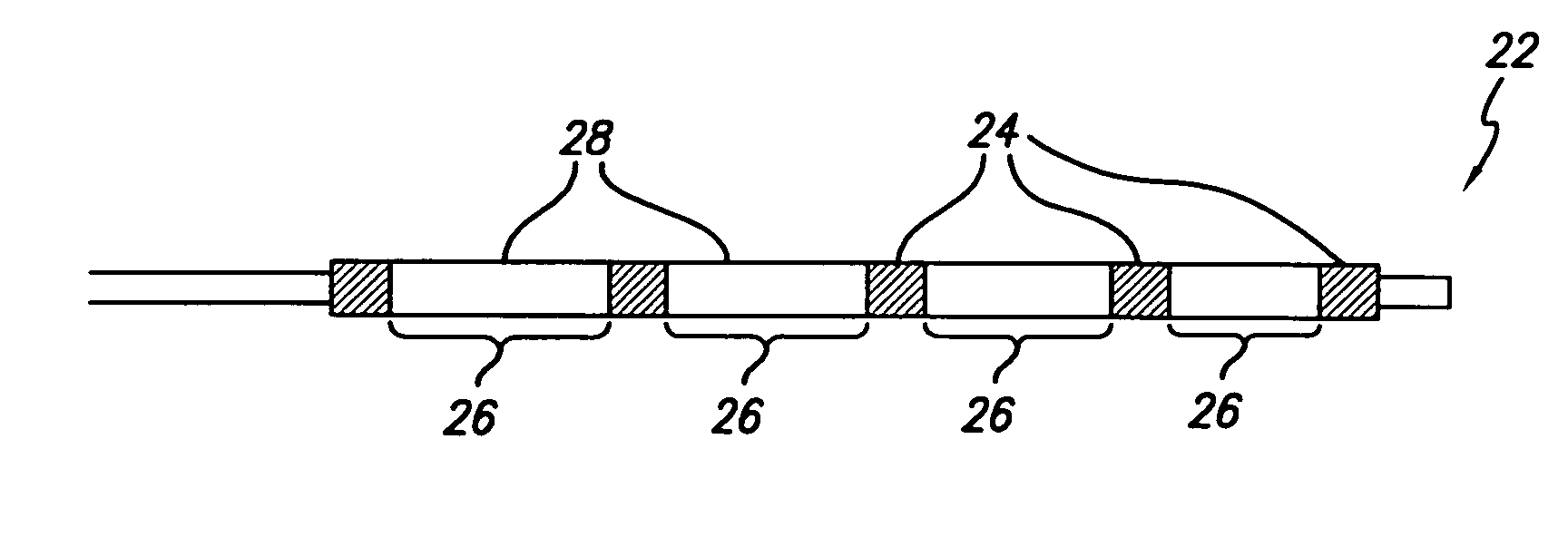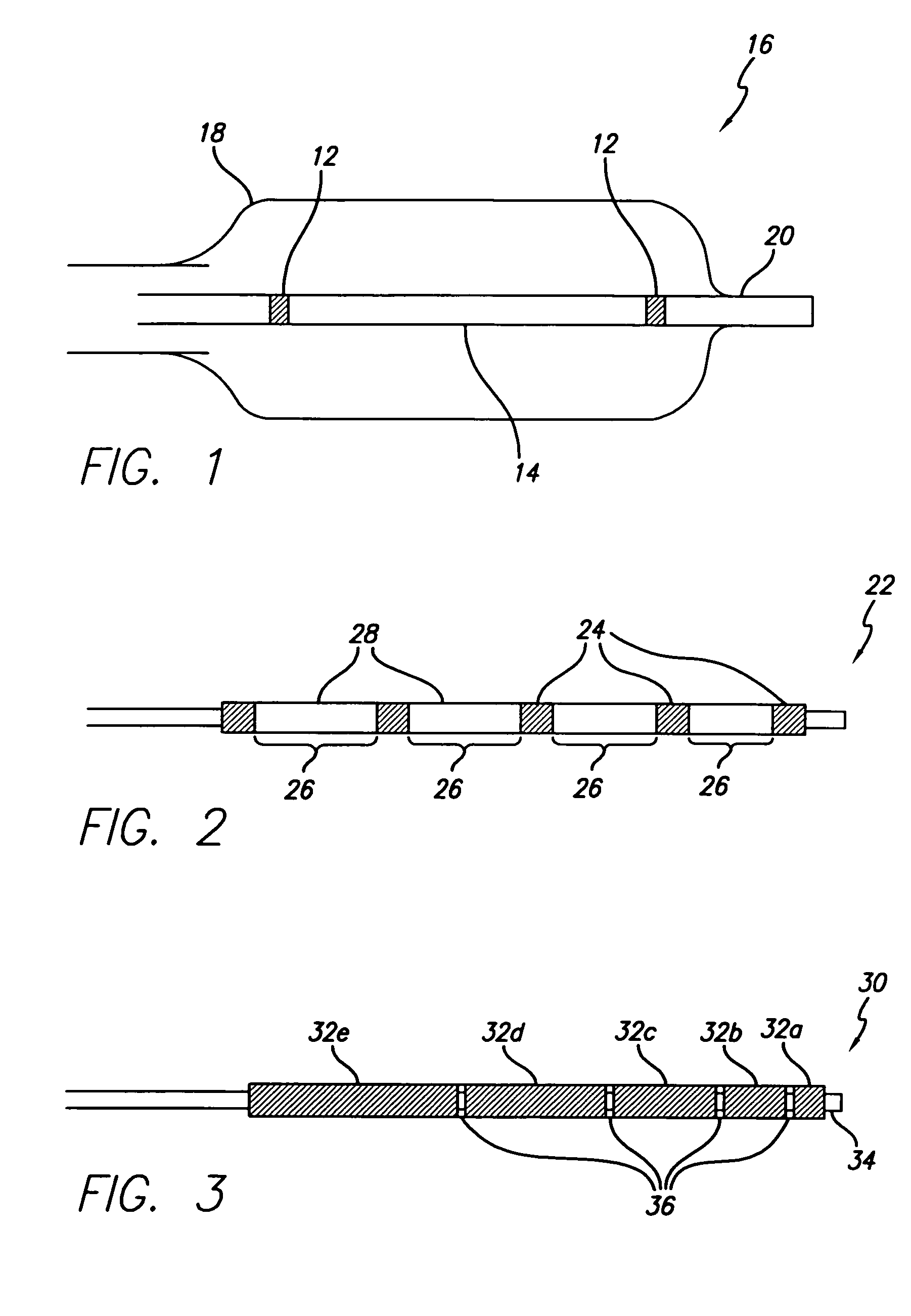Polymeric marker with high radiopacity for use in medical devices
a polymer marker and radiopacity technology, applied in the field of elongated intracorporeal devices, can solve the problems of relatively high manufacturing cost of metallic markers, undesirable discontinuities, and catheter shafts, and achieve the effects of reducing or preventing the flow of polymeric materials, reducing the risk of recurrence, and large profil
- Summary
- Abstract
- Description
- Claims
- Application Information
AI Technical Summary
Benefits of technology
Problems solved by technology
Method used
Image
Examples
Embodiment Construction
[0020]The present invention provides a radiopaque marker for use on a variety of devices that is flexible, highly radiopaque and is easily attachable to such devices by melt bonding. These properties allow markers to be of minimal thickness and thereby minimize the effect the marker has on the overall profile and stiffness of the device to which it is to be attached.
[0021]In order to achieve the high fill ratios that are necessary to attain the desired radiopacity and in order to do so without compromising the compoundability and workability of the polymeric material nor its ultimate strength and flexibility, a number of different parameters have been found to be of importance. More specifically, both the particle shape and particle size of the radiopaque agent must be carefully controlled while the inclusion of a wetting agent such as MA-g-PO in the polymer blend is critical. An antioxidant may additionally be included in an effort to reduce the adverse effect the high processing t...
PUM
| Property | Measurement | Unit |
|---|---|---|
| diameter | aaaaa | aaaaa |
| diameter | aaaaa | aaaaa |
| length | aaaaa | aaaaa |
Abstract
Description
Claims
Application Information
 Login to View More
Login to View More - R&D
- Intellectual Property
- Life Sciences
- Materials
- Tech Scout
- Unparalleled Data Quality
- Higher Quality Content
- 60% Fewer Hallucinations
Browse by: Latest US Patents, China's latest patents, Technical Efficacy Thesaurus, Application Domain, Technology Topic, Popular Technical Reports.
© 2025 PatSnap. All rights reserved.Legal|Privacy policy|Modern Slavery Act Transparency Statement|Sitemap|About US| Contact US: help@patsnap.com


